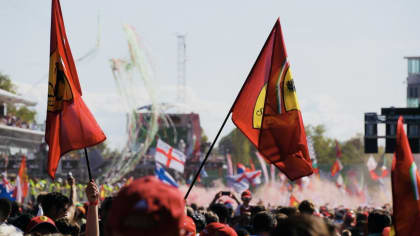JAPANESE CLASSIC CAR SHOW
9th annual event at the Queen Mary
This article is from our archives and has not been updated and integrated with our "new" site yet... Even so, it's still awesome - so keep reading!
Published on Fri, Sep 27, 2013
By: The LACar Editorial Staff

Long Beach’s 9th Annual Japanese Classic Car Show
Story by Susie Ling
Pictures by Roy Nakano
It happened eight times before, but for the 9th annual Japanese Classic Car Show, the traffic was heavier, the line to get in longer, the crowd was bigger, and the cars on display more plentiful. What started as an idea in the minds of Koji and Terry Yamaguchi has turned into a major car show of full-fledged proportions. Award categories this year included “farthest driven,” “oldest,” and “motorcycles”—and there were plenty of examples of each.
Flashback forty years ago: It was after the 1973 oil crisis that Japan’s Big Three of Honda, Toyota, and Nissan really infiltrated the American consumer market. At first, Americans were focused on the fuel efficiency and reliability of the Japan’s small kei cars. But Acura, Mazda, and others all added speed, style, and luxury. Today, Toyota and General Motors are head to head as the largest automobile manufacturers of the world.

Japan’s car industry began in the first years of the 20th century. In 1911, Kwaishinsha Motorcar Works began the manufacturing of the DAT car. This would evolve to Nissan Motors (see LA Car’s “To the Beat of a Different Drummer”). In 1917, Mitsubishi Model A was built by the Mitsubishi Shipbuilding zaibatsu (business conglomerate). Toyota - formerly a textile manufacturer - began building cars in 1936. Henry Ford established a production plant in Yokohama in 1925, followed closely by his rivals at GM and Chrysler. After World War II, most Japanese relied on motorbikes and small trucks. As the economy improved, the kei cars became more common by the 1960s. Export vehicles followed, and the rest, as they say, is history.
When Japanese cars first arrived on American shores back in the 1950s and 60s, no one could have predicted they would one day rise to collector status. But that is exactly what happened. And on September 28th, we saw a collection of the pioneering Toyota Coronas on display as if they were still in 1965, along with an array of groundbreaking Datsun 510s (see LA Car’s “In Search of the First Datsun 510 Street Tuner”), a contingent of Honda 600s, the first rotary-engined Mazdas, and the rest of the automotive cast from the other side of the Pacific pond at the port of the Queen Mary. The JCCS has become as classic as the cars it displays.

For more information, japaneseclassiccarshow.com. Scenes from the 9th annual Japanese Classic Car Show: Scenes from the past four Japanese Classic Car Shows [nggallery id=queenmary2013]




